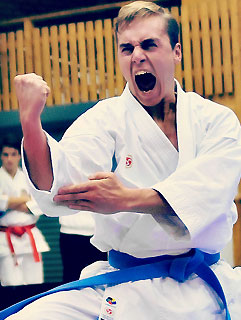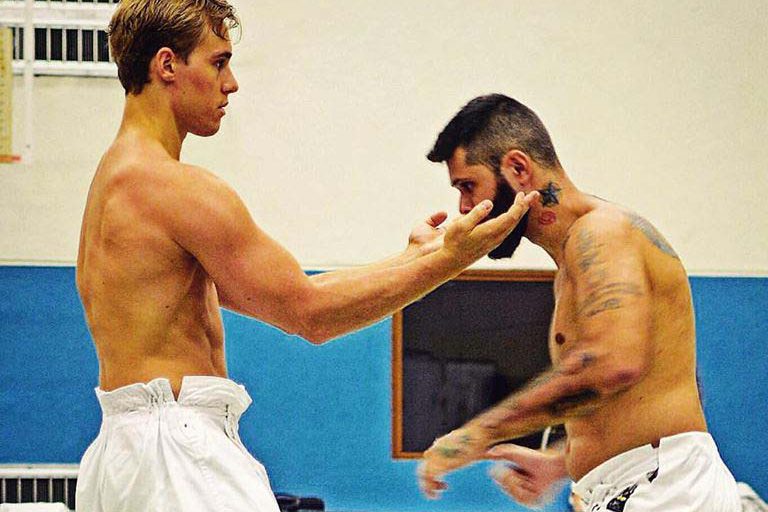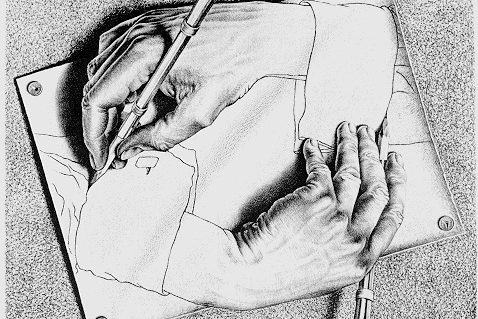Question:
Do you want to improve your kime?
Of course!
Kime is that magical ingredient separating good Karate practitioners from great practitioners.
It’s that split-second neuromuscular contraction at the end of your techniques.
(Also known as “wow, you have great snap in your punches!”)
But there’s nothing magical about it.
It’s simply a matter of correct technique.
There are 3 keys to kime:
- The Relaxation
- The Contraction
- The Timing
Most people are good at one or two of these areas.
But… you need all three!
So, let’s take a closer look to see what you can improve.
Check it out:
1. The Relaxation
Do you remember the first time you rode a bicycle?
It was probably stiff and awkward.
But after a few days you got the hang of it, right?
Today you can ride a bicycle with no hands. You’re so relaxed!
Relaxation is essential for mastery.
In Karate too.
So, the first thing you need to know about kime is that it starts from relaxation.
- When you’re tense, you’re slow.
- When you’re relaxed, you’re fast.
The problem is that most people don’t know how to relax.
They are so stressed out from daily life that their central nervous system is in a constant fight-or-flight mode. So they bring that mindset into the dojo.
The answer is NOT to drink more coffee.
Stop with the energy drinks too.
Bring back your natural state of inner harmony!
Only then can you truly relax. Because a relaxed body comes from a relaxed mind.
(This breathing exercise will greatly help.)
Now listen to this…
I once read a scientific study comparing the difference between Olympic swimmers and elite swimmers. The researchers concluded that both groups of swimmers had equal levels of maximal muscular tension, but the Olympic swimmers were much better at relaxing than the others. That’s why they qualified for the Olympics.
Here’s the difficult part:
You can not force yourself into relaxation.
Just ask someone to scream “RELAX!” to you, and see how it goes. Your cortisol levels (stress hormone) will shoot through the roof immediately.
Relaxation has to come from the inside.
Just like happiness. : -)
This is why I begin all my Karate classes with ‘mokuso’ (meditation).
It all starts in the mind.
2. The Contraction
Have you heard of Sir Isaac Newton’s famous laws of motion?
My favorite one is:
“For every action there is an equal and opposite reaction.”
That’s why you need to tense your muscles when you hit something.
You see, although relaxation is important, you can’t fight in a constant state of complete relaxation. Otherwise, you’ll crush every bone in your body when you hit something!
(Or hyperextend your joints in kata / kihon.)
Your body needs to be able to withstand the power you deliver.
How?
By contracting your muscles at the moment of impact.
- Relaxation first.
- Tension second.
(Related reading: The Complete Guide to Strength Training & Conditioning for Karate)
But it’s not enough to just squeeze your fist.
Your body doesn’t work in isolation. It works in integration.
You need to involve your whole body in your technique, so you squeeze the juice out of every relevant muscle fibre in your whole body.
This is called “zentai ryoku” in Japanese.
Use your whole body!
3. The Timing
Is it smart to drive a car with the handbrake on?
Probably not.
The same goes for kime.
You need to switch from relaxation to contraction just before impact.
If you tense your muscles too early, your technique decelerates. This is because your antagonists (the muscles working against your movement) are holding you back.
Conversely, if you tense your muscles too late, you’ll hurt yourself.
So, you truly need to coordinate your relaxation and contraction just right!
How?
Through mindful repetition.
The more you repeat a technique, the more efficient your body becomes at delivering it.
But make sure you do it with high quality.
(Here’s my favorite way to repeat techniques.)
And that’s it.
If you boost these 3 areas, I guarantee you’ll achieve incredible kime.
Start with identifying the area you need to improve most, and practice that.
Do you need better relaxation (1), contraction (2) or timing (3)?
When you know the answer, the rest is easy.
The dojo is calling…
Good luck!
_____
PS. Check out my new video to supercharge your side kick (yoko-geri).



18 Comments